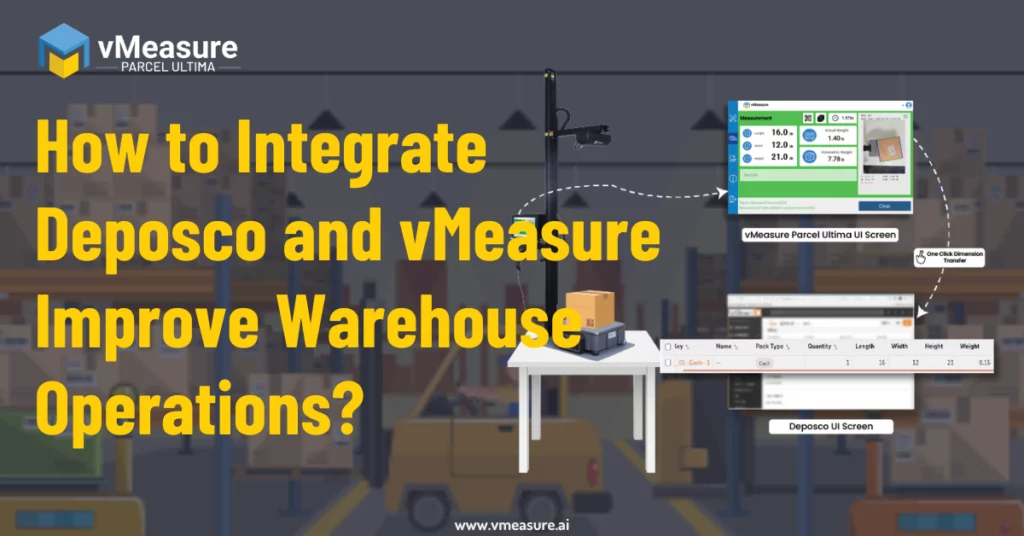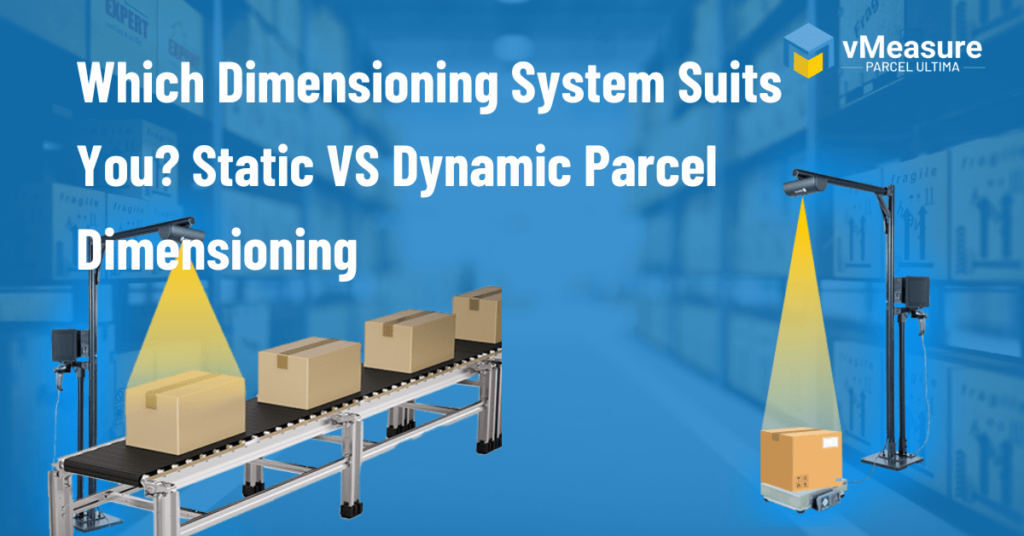Table of Contents
Introduction
Imagine this scenario: you’re running a flourishing eCommerce company with a vast warehouse teeming with diverse products. Suddenly, you encounter an inexplicable surge in cost, lost inventory, and customer complaints about order fulfillment delays.
What could be the underlying problem?
You might be surprised to learn that the culprit might be inaccurate dimensioning in your warehouse. This blog will explore how such seemingly insignificant inaccuracies can cause colossal impacts on your business operations.
Understanding the connection between the fine details of your warehouse operations and their larger impact is crucial. Like a finely tuned machine, every element of your business, no matter how minor it appears, plays a critical role. Today, we unravel the seemingly invisible thread linking inaccurate dimensioning to extensive warehouse inefficiencies.
Definition and Importance of Accurate Dimensioning
Dimensioning, a term often thrown around in warehouse management circles, is far more than just technical jargon. To put it simply, dimensioning involves accurately measuring the physical dimensions – that’s the height, width, and length – as well as the weight of products stored in a warehouse.
Picture a warehouse worker, armed with a dimensioning tool, working their way through aisles of inventory, meticulously taking measurements. The picture, while simplistic, is integral to effective warehouse operations.
However, let’s dive a bit deeper.
Dimensioning doesn’t stand in isolation. The very anatomy of your warehouse, every pallet rack, every storage bin, and every square foot of floor space is intimately tied to this process. The numbers that come out of the dimensioning process are like coordinates on a map, guiding the allocation of warehouse space.
Let’s think of these vital measurements as the DNA of your inventory – unique to each product, and influencing how and where it should be stored.
To illustrate this further, let’s look at five keyways dimensioning significantly impacts warehouse operations:
Common Pain Points in Warehouse Operations
1. Space Optimization
Imagine trying to fit a round peg in a square hole. Sounds frustrating, doesn’t it? That’s exactly what happens when you’re unaware of your product dimensions. Accurate dimensioning ensures each product fits into the ‘hole’ designed for it – be it a shelf, a rack, or a bin – ensuring optimal space utilization.
2. Efficient SKU Arrangement
When you know the exact dims and weights of your products, arranging SKUs becomes a breeze. It’s like solving a puzzle where you know exactly where each piece fits. This leads to a well-organized warehouse, where every item has its own designated place, ultimately speeding up the order-picking process.
3. Accurate Warehouse Layout
Your warehouse layout is heavily influenced by the dimensioning process. It guides aisle widths, storage heights, picking zones, and safety routes. With accurate dimensioning, you can design a layout that minimizes unnecessary movements, reduces worker fatigue, and maximizes productivity.
4. Swift Order Fulfillment
In a time when customers are hitting the ‘buy now’ button and counting the seconds until their product arrives, speed is everything. Knowing your product dims and weights can help you determine the fastest way to retrieve and pack them, significantly speeding up the order fulfillment process.
5. Cost-Effective Operation
Lastly, when you combine space optimization, efficient SKU arrangement, an accurate warehouse layout, and swift order fulfillment, what you get is a lean, cost-effective operation. Accurate dimensioning helps you trim the fat off your operations, allowing you to deliver more value to your customers at a lower cost.
In our fast-paced world, where the difference between a satisfied customer and a lost sale can boil down to hours, the margin for error in warehouse operations is razor-thin. Accurate dimensioning is the cornerstone upon which efficient warehouses are built. It’s more than a process; it’s a philosophy that stresses attention to detail, understanding that every inch and every ounce matter.
Remember, as the saying goes, “Measure twice, cut once.” Ensuring the accuracy of your dimensions on the front end saves a multitude of problems down the line. Therefore, the practice of accurate dimensioning is not merely a function of your warehouse operations; it’s the secret ingredient to a successful logistics strategy.
Gain valuable knowledge by reading our blog on “Understand the importance of size in the realm of automated warehousing.
The Impact of Inaccurate Dimensioning on Inventory Management
Imagine trying to navigate through a city using a map with incorrect coordinates. No matter how hard you try, you’ll always end up at the wrong destination. This is exactly what happens when you navigate your warehouse with inaccurate dimensioning. It misleads every aspect of your inventory management, from stock levels to order replenishment, leading to a cascade of problems that can put your business on a perilous path.
Let’s unpack this by delving into four key ways inaccurate dimensioning can wreak havoc on your inventory management:
1. Inaccurate Stock Levels
- Picture this, you’re running an online store and a best-selling product is marked as ‘out of stock.’ Your customers are frustrated, and sales are plummeting. But then you discover, much to your dismay, that the product isn’t out of stock at all! The product was simply dimensioned larger than it is, tricking your inventory system into believing there’s less stock than there actually is.
- On the flip side, underestimating product dims and weights could lead to overstocking. That’s your capital, sitting idle in the warehouse, when it could have been used to grow your business better.
2. Misplaced Items
- In a warehouse, everything has its place. However, when dims and weights are misjudged, items end up in the wrong locations. What happens next is a wild goose chase trying to locate these misplaced items.
- The result? Wasted time, delayed orders, and a whole lot of unnecessary stress.
3. Inaccurate Demand Forecasting and Order Replenishment
- Dimensioning affects more than just your warehouse. It trickles down to your sales and operations planning as well. Inaccurate dimensions can distort demand forecasting, leading to poor sales predictions. In turn, this compromises order replenishment, leading to a higher risk of stockouts or overstocks.
4. Distorted Supply Chain Visibility
- A warehouse management system (WMS) is only as good as the data fed into it. When that data is flawed due to inaccurate dimensioning, it’s like putting on a pair of broken glasses. Your vision of the supply chain gets blurred, leading to poor decision-making. The ripple effect of this can be damaging – resources mismanaged, order accuracy compromised, and a potential blow to your brand reputation.
- Now, let’s consider the flip side. When product dims and weights are accurately captured, it’s like shining a light on your inventory management. Suddenly, your stock levels are accurate, your items are right where they’re supposed to be, your demand forecasting is spot on, and your supply chain visibility is crystal clear. More importantly, you’re delivering on your promise to customers – accurate order fulfillment and prompt delivery.
In the grand scheme of warehouse operations, dimensioning might seem like a tiny cog. But, as we can see, this tiny cog can set the entire machine off balance if it’s not accurately measured and monitored. Inaccurate dimensioning doesn’t just disrupt inventory management; it creates a domino effect that can topple your entire operation. However, accurate dimensioning can serve as your guiding light, steering you clear of potential pitfalls and setting your warehouse on the path to peak efficiency.
The Impact of Inaccurate Dimensioning on Capacity Planning
In the complex world of capacity planning, accurate dimensioning plays a crucial role in maximizing space utilization, optimizing resource allocation, and minimizing costs. When dimensioning goes awry, the consequences can be detrimental to your bottom line and operational efficiency.
1. Wasted Space and Increased Costs
Inaccurate dimensioning leads to inefficient use of warehouse space. Misjudged dimensions and weights of products can result in overestimating the space required, leaving valuable cubic footage unutilized. This wasted space represents a missed opportunity to store additional products or optimize the layout for improved flow. Consequently, businesses may be forced into unnecessary expansion or leasing of additional warehouse space, leading to increased operational costs and reduced profitability.
2. Disrupted Flow and Decreased Customer Satisfaction
Inaccurate dimensioning disrupts the optimal flow of goods within the warehouse. When items are not accurately measured and slotted, it can create bottlenecks and delays in order fulfillment.
This translates into longer lead times, potentially resulting in dissatisfied customers.
As expectations for fast and reliable delivery continue to rise, accurate dimensioning becomes a critical factor in meeting customer demands and maintaining high satisfaction levels.
3. Negative Impact on Labor Productivity
Inefficient dimensioning practices can have a significant impact on labor productivity. Workers may struggle to manage and move items that haven’t been properly measured and slotted, leading to time wasted in searching for suitable storage locations or reorganizing inventory.
This not only increases labor costs but also hampers overall productivity.
In contrast, accurate dimensioning enables smoother workflows, allowing workers to efficiently navigate the warehouse and perform their tasks without unnecessary obstacles.
4. Financial Loss and Inefficient Resource Utilization
Every cubic foot of unused space represents a financial loss for businesses. Warehousing costs, both fixed and variable, have a significant impact on profitability. Inaccurate dimensioning disrupts effective slotting, preventing optimal utilization of warehouse resources.
Poorly organized layouts, inefficient storage arrangements, and suboptimal resource allocation can result in higher costs per order and decreased operational efficiency.
On the other hand, accurate dimensioning supports intelligent capacity planning, allowing businesses to maximize resource utilization, minimize costs, and optimize overall performance.
To overcome the challenges posed by inaccurate dimensioning in capacity planning, businesses need to invest in accurate and automated dimensioning systems. These advanced technologies leverage cutting-edge tools such as 3D vision and AI algorithms to provide precise measurements, ensuring that every inch of space is utilized effectively. Additionally, regular audits and quality control processes can help maintain accuracy over time, ensuring consistent and reliable dimensioning data.
In the competitive landscape of modern warehousing, accurate dimensioning is no longer a luxury; it’s a necessity. By recognizing the impact of inaccurate dimensioning on capacity planning, businesses can take proactive steps to implement accurate dimensioning practices, optimize space utilization, minimize costs, and ultimately enhance operational efficiency.
The Solution: Automated Dimensioning Systems
While inaccurate dimensioning can cause severe issues, the good news is that solutions exist. Implementing an automated dimensioning system using cutting-edge technologies like computer vision and AI can significantly improve the precision of your warehouse operations. These automated dimensioning systems automatically measure dims and weights of products, ensuring accuracy, and saving labor hours.
Embracing such solutions can lead to optimal space utilization, accurate inventory levels, efficient logistics operations, and accurate demand forecasting, all contributing to better capacity planning and inventory management. However, remember, technology is just a tool; it requires correct implementation and efficient use to reap its benefits.
Experience lightning-fast, seamless dimensioning with vMeasure Parcel Ultima – our top-of-the-line automated dimensioning system. Dive in now to see how it transforms dimensioning in under 3 seconds!
Conclusion
In summary, while dimensioning might seem like a minor aspect of warehouse operations, it holds significant sway over inventory management and capacity planning. Inaccurate dimensioning can lead to a domino effect of inefficiencies and losses, as illustrated by our examples. However, with modern automated dimensioning systems, businesses can combat these challenges, enhance accuracy, and streamline their operations.
It’s high time businesses revisited their dimensioning practices and embraced automated dimensioning systems. Remember, every inch in your warehouse counts, and so does every ounce of accuracy in measuring it.




